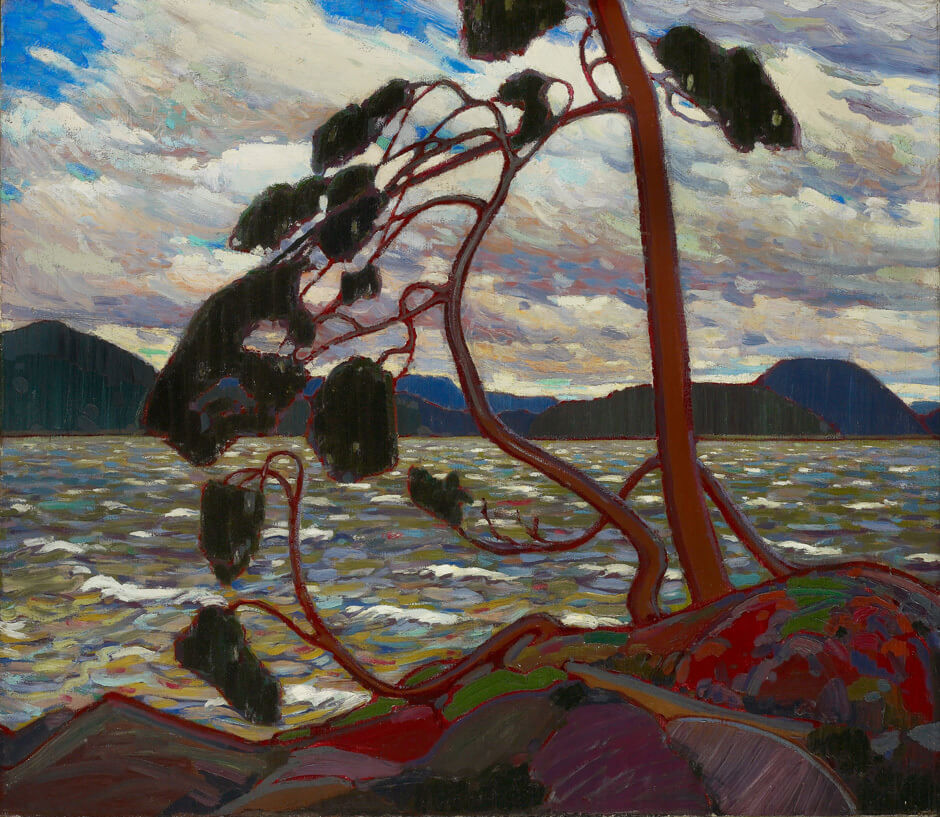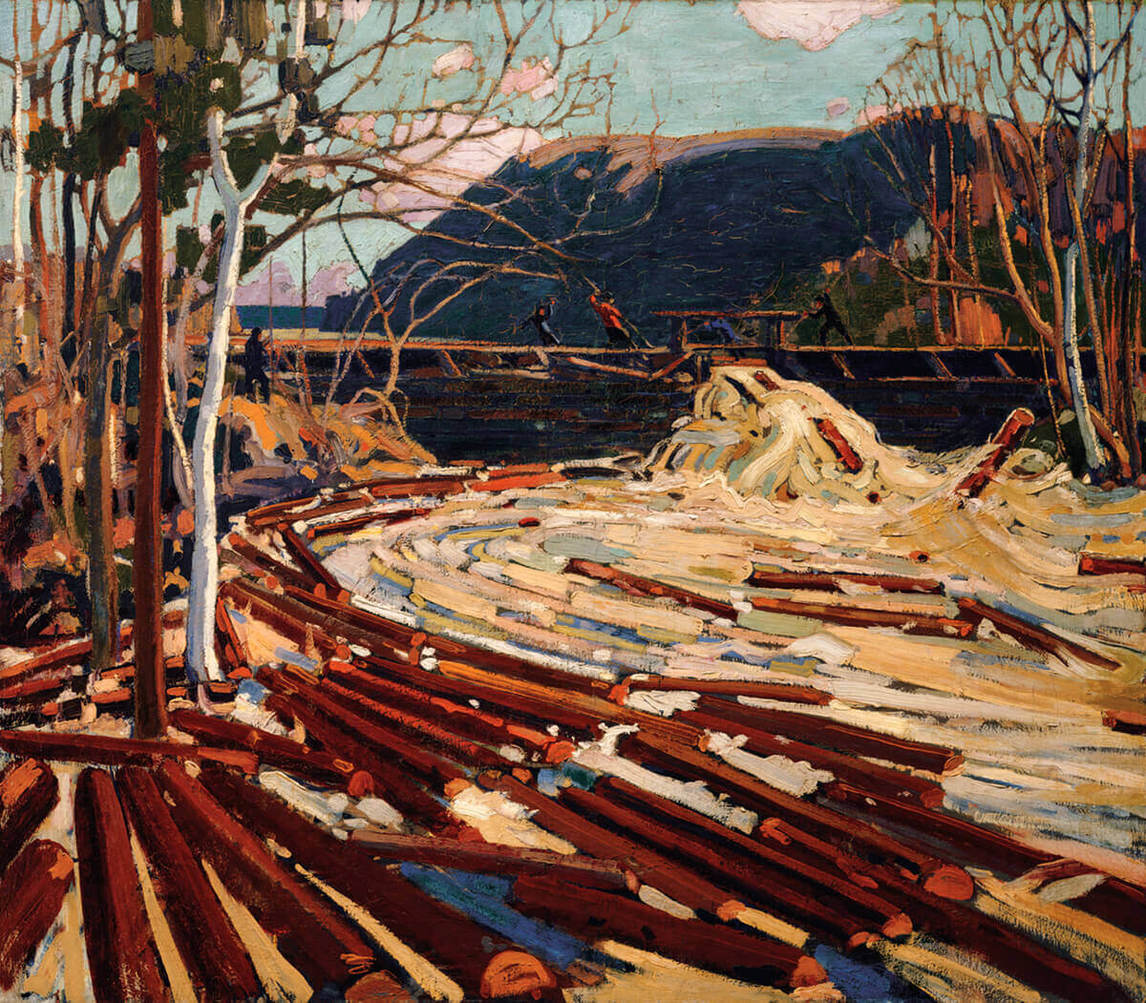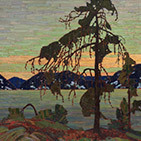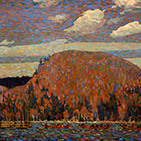The West Wind 1916-17

Tom Thomson, The West Wind, 1916–17
Oil on canvas, 120.7 x 137.9 cm
Art Gallery of Ontario, Toronto
Painted in the winter of 1916–17, this lone pine tree demonstrates that Thomson’s formation as an artist was both erratic and original. He takes the sinuous forms of Art Nouveau (a decorative style he had used as a commercial artist and in images such as Northern River, 1914–15), and the brash and vivid colours of the early Expressionists (especially in the ribbons of red in the foreground, outlining boulder-shaped areas), and uses them to create his own composition. The image, based on a landscape he knew well, contains imaginary elements too.

Thomson places the pine tree alone on a point beside a lake. It stands in the middle of the canvas, lopped off at the top—a position that transforms a simple subject into one making a strong and provocative statement. The twisted trunk and branches show age and perseverance, and bravery against the elements.
The painting may also reflect Thomson’s state of mind—a kind of mental or metaphorical self-portrait. He may have felt empathy with the tree, for the way it had grown and survived. He painted this canvas while, in Europe, the First World War was raging—a cataclysmic event in which many of his friends were involved. Survival, threatening circumstances, and the possibility of great loss had become paramount issues for everyone around him.
The background of the painting is a complicated invention of animated sky, scudding clouds, and wind-driven whitecaps, which together reinforce the painting’s (posthumous) title. Between sky and lake lie the thin wedge of shore and far hills, at once separating yet fusing sky and water with pitch-dark vertical stitches of pigment in Prussian green and blue. What impresses viewers most about this painting is its power and energy. The surging sky and the constant movement on the lake’s surface limit the only stillness in the painting: the pine tree itself. Of the entire Canadian canon, this painting is closest in its intensity to the paintings of Vincent van Gogh (1853–1890).


The completed canvas is very different, both as an idea and in its detail, from the sketch Thomson made in the spring of 1916. Whereas most of Thomson’s small oil sketches were markedly fresher, stronger, and more intimate than the canvases derived from them, this painting surpasses the sketch with its dynamism. No other canvases by Thomson, with the exceptions of The Jack Pine, 1916–17 (sketched and painted in the same time frame as The West Wind) and of Opulent October, 1915–16 (painted the winter before from a sketch done in the summer of 1915), share this same superb quality.
More often the canvases fail to attain the level of intensity and immediacy that an artist experiences when the moment of inspiration strikes and the subject is at hand. The working up of several other canvases done at this time, 1916–17, such as Woodland Waterfall (not a successful painting), The Fisherman, and The Drive, are all examples of paintings with the stagey quality and stiff awkwardness that led Dr. James MacCallum to claim they were unfinished. They have neither the confidence nor the magisterial aplomb of The West Wind or The Jack Pine.

 About the Author
About the Author
 More Online Art Books
More Online Art Books
 Acknowledgements
Acknowledgements